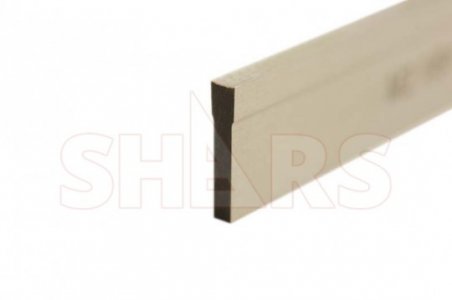Could be. A picture of your setup would help. Without knowing details, I can give you some general info that I use when parting.
I struggled with parting and tool breakage for a while until I figured out what my particular lathe (Atlas TH42) needed and developed my personal technique for it. Parting is nearly as easy as turning for me now. I used to dread parting, now it's just another milling process .I wouldn't call it fun, but it is satisfying to make a nice clean part with minimal fuss and muss..
Too much tool stick out makes it more "flexible" and can result in poor cutting, jamming, chattering or breakage. When I part, I make sure the parting tool is just long enough to part the work piece and no longer. Keeps it as rigid as possible. If I'm parting a large diameter, I'll often do it in stages so I can make most of the cut with the least mount of stick out. It keeps the tool as rigid as possible for most of the cut and you only have to risk a lot of stick out at the very end of the cut. Be aware that if you do it this way, you have to readjust your on center because most parting tools hold the cutter on an angle. As you extend the cutter, it tends to raise the cutting point up and takes it off "on center". That's for most HHS cutters holders, carbide insert cutters are fixed by the tool holder height and maximum stick out is a physical limitation of the design of the tooling itself.
I find I sometimes need to change my rpm as the tool penetrates larger items because SFM changes as the part diameter is reduced while cutting. That's mostly for large pieces though. Small pieces I can just set the RPM and part it off.
I find when I'm close to the final cut, I need to slow my feed rate down as when the part is very small in diameter, I find it's very prone to bend from too much pressure from the cutter head and the result is a jam or worse.
One center is very important. Too high it doesn't cut right (kind of slips and skids instead of making proper chips). Too low and I find it tends to bind and jam, resulting in the piece "walking up" and on-top-of the cutter edge, rips the piece sideways in the chuck or (worst case scenario) snaps the cutter.
Lubrication is also very important when parting. Lots of it and all the time.
Make sure every axis you are not moving is locked down tight.
Make sure your cutter is perfectly perpendicular to the piece. Even a touch off tends to side load the cutter and make wider than expected cuts, or you end up with a cut that isn't "square". Side loading also risks breakage.
If you see anything in your set up move that shouldn't move in any way when parting...... STOP!
Go back over your rig and find out why something moved because that is an instant recipe for disaster. For your lathe, your tooling, your part and maybe even yourself.
I find HHS cutters easier to part with compared to carbide inserts. Not sure why, it's just how it works for me. It might be the fact that HSS will have a little more "give" compared to carbide tools, which are more prone to breakage instead of allowing a tiny bit of flex that might save a HSS cutter. Not sure on that one, just guessing.
Last thing I will leave you with is make Sure your tool post and fixture is a rigid as possible. I used to put my cut off tooling directly on the top compound slide on my Atlas. My whole world changed when I made a rigid Plinth to mount the parting tool on instead of the top compound.

